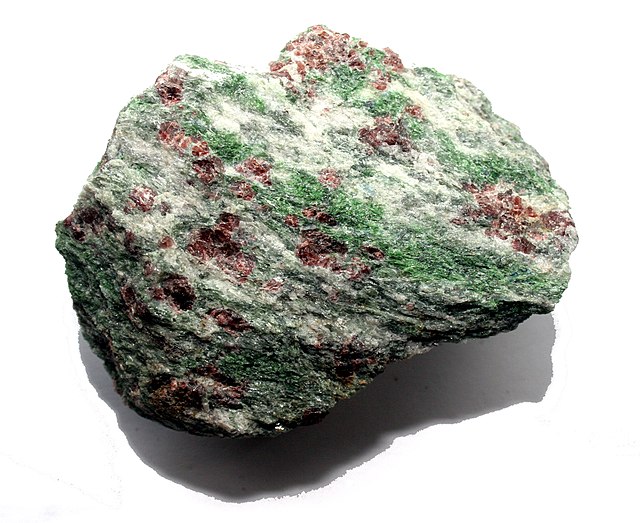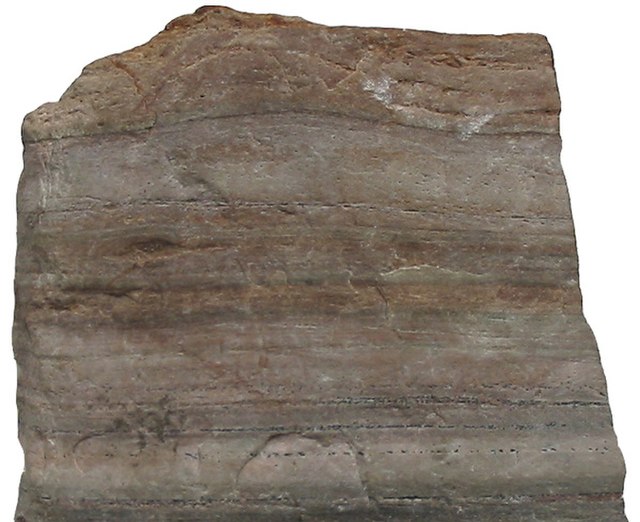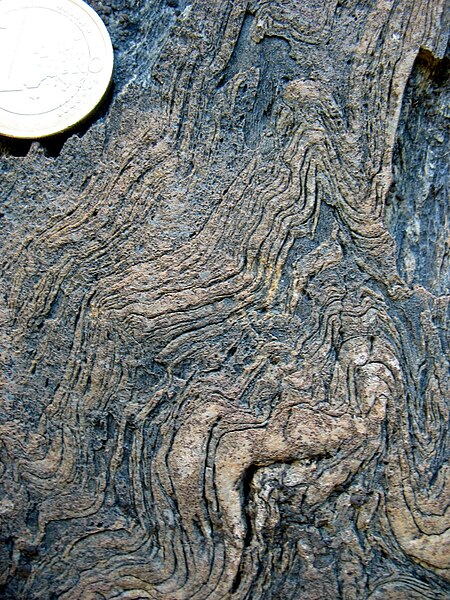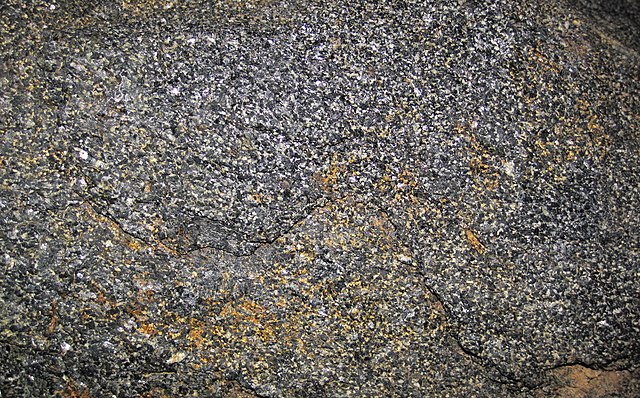Eclogite is a metamorphic rock containing garnet (almandine-pyrope) hosted in a matrix of sodium-rich pyroxene (omphacite). Accessory minerals include kyanite, rutile, quartz, lawsonite, coesite, amphibole, phengite, paragonite, zoisite, dolomite, corundum and, rarely, diamond. The chemistry of primary and accessory minerals is used to classify three types of eclogite. The broad range of eclogitic compositions has led to a longstanding debate on the origin of eclogite xenoliths as subducted, altered oceanic crust.
Eclogite piece from Norway with a garnet (red) and omphacite (greyish-green) groundmass. The sky-blue crystals are kyanite. Minor white quartz is present, presumably from the recrystallization of coesite. A few gold-white phengite patches can be seen at the top. A 23 millimetres (0.91 in) coin added for scale.
Photomicrograph of a thin section of eclogite from Turkey. Green omphacite (+ late chlorite) + pink garnet + blue glaucophane + colorless phengite.
Eclogite
Eclogite from Almenning, Norway. The red-brown mineral is garnet, green omphacite and white quartz.
Metamorphic rocks arise from the transformation of existing rock to new types of rock in a process called metamorphism. The original rock (protolith) is subjected to temperatures greater than 150 to 200 °C and, often, elevated pressure of 100 megapascals (1,000 bar) or more, causing profound physical or chemical changes. During this process, the rock remains mostly in the solid state, but gradually recrystallizes to a new texture or mineral composition. The protolith may be an igneous, sedimentary, or existing metamorphic rock.
Quartzite, a type of metamorphic rock
Metamorphic rock, deformed during the Variscan orogeny, at Vall de Cardós, Lérida, Spain
Amphibolite formed by metamorphism of basalt
Metamorphic rock containing staurolite and almandine garnet








